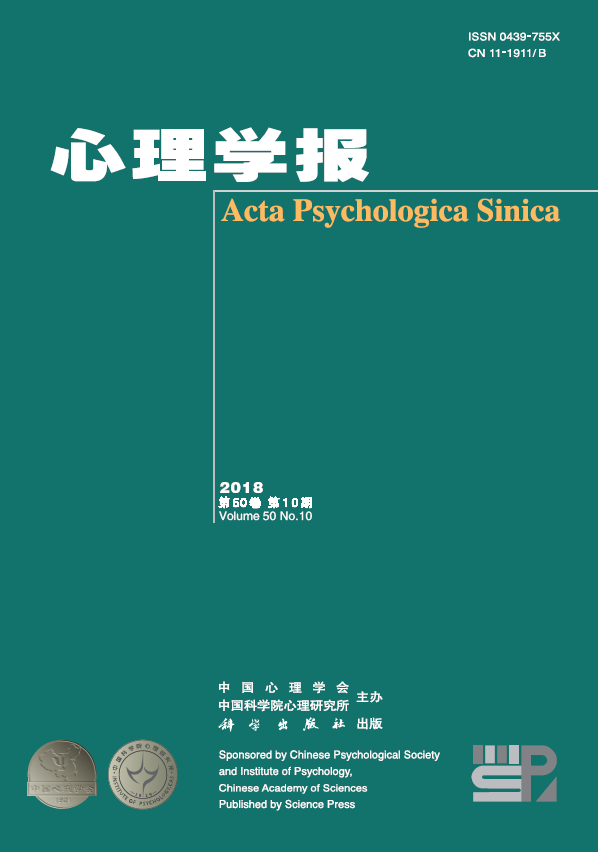According to the previous studies, emotional contagion can be regulated by the subsequent cognition which can be retrieved by unconsciousness or consciousness. Can emotional contagion be regulated by people’s antecedent emotion or not? That is, the receiver’s antecedent emotion, which has existed before the sender’s emotional display, regulates the final effect of emotional contagion. If true, there might be two possibilities in the regulation: counter and threshold-descent. Our goal is to explore the regulation effect of the antecedent negative emotion on emotional contagion with two possibilities.
We designed two experiments in this study to verify two mental phenomena, viz., counter and threshold-descent emotional contagion respectively. In these two experiments, a within-subject design was employed, and the biofeedback technology was used to measure the participants’ emotional state in them. All participants should accept the baseline measurement after they took psycho-relaxation exercises at the beginning of the experiment. Firstly, we implemented the experiment of counter emotional contagion. Taking hostility as a case of the antecedent emotion, we aroused Chinese participants’ hostility by playing video of The Nanjing Massacre to them, and then let them watch two funny videos about Chinese and Japanese lives. Meanwhile, the participants’ physiological indices were collected. The aim of the experiment was to compare the participants’ emotional experience when they watched the above two funny videos. Secondly, in the experiment of threshold-descent emotional contagion, the restless experience, as the antecedent emotion, was aroused by undergoing repeated several “unsuccessful” experiments. The participants’ physiological indices were collected and compared too when they watched funny video before and after the restless experience elicited which corresponded to the episodes 1 and 2 respectively. The experiments aimed to explore whether the participants’ antecedent emotional state would affect their emotional contagion via different experimental treatment.
In the first experiment, the results indicated that the funny Japanese video did not infect the Chinese participants after they watched The Nanjing Massacre. Actually, the two funny videos are being earmarked as “Chinese” or “Japanese” at random. The participants’ negative emotion was successfully elicited by watching The Nanjing Massacre. BVP amplitude significantly descended, whereas BVP frequency ascended drastically in comparison with the baseline level. After the experiment, we asked the participants what emotion they experienced while watching The Nanjing Massacre, and their answer was hostility and anger. We compared the participants’ physiological changes when watching the funny Japanese video and The Nanjing Massacre with those of the baseline level respectively. As the results revealed, the participants’ physiological changes when watching the above two videos obtained the same changed trend relative to the baseline level, which proved that the funny Japanese video did not induce the participants’ positive emotional experience successfully. Meanwhile, we compared further the participants’ physiological changes during the process of watching the funny Japanese video with those when watching The Nanjing Massacre. The results showed that their physiological changing tendency in watching the funny Japanese video was the same as that in watching The Nanjing Massacre, and the former’s level of psychological arousal was greater than the latter’s, which further confirmed that the funny Japanese video amplified the participants’ anger rather than the positive emotional experience. We gather, therefore, that the counter emotional contagion appeared in this experiment. Rather, the participants’ positive emotion was aroused when they watched the funny Chinese video, for their physiological changing trend of BVP amplitude and frequency was completely opposite to that when watching the funny Japanese video.
The repeated measures ANOVA were employed to analyze the data from the experiment of threshold-descent emotional contagion. In the episode 1, the results showed that the participants’ positive emotion was aroused successfully by watching funny video 1, in which BVP amplitude significantly descended, whereas BVP frequency ascended in comparison with the baseline level. Statistical analysis of data suggested that the participants’ emotion was more negative when they were feeling down by the repeated “unsuccessful” experience, but more positive when watching another funny video after the restless experience (episode 2), in which BVP amplitude and SC significantly ascended, whereas BVP frequency descended in comparison with watching funny video 1 (episode 1). That indicated the participants’ negative emotion (restlessness) facilitated the positive emotional contagion by lowering the threshold value of the positive emotion perception, so we call it “threshold-descent regulation”. Subjective ratings of funniness of these two videos were obtained, and the scores were compared by using the t test. The result demonstrated that the score of funniness of video 1, which participants evaluated, was significantly higher than that of video 2.
In the experiment of counter emotional contagion, the findings suggested that, the antecedent negative emotion not only prevented the subsequent positive emotional contagion, but also intensified the participants’ antecedent negative emotion experience. So we conclude that the result that “the observer gets ‘infected’ by the emotion he or she perceives” is not always attained as people think. In the experiment of threshold-descent emotional contagion, the antecedent negative emotion could intensify the positive emotional contagion. Hence, the participants’ antecedent emotion did not weaken the effect of emotional contagion, but magnified their subsequent positive emotional experience, instead.




